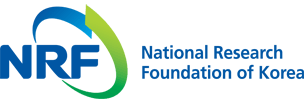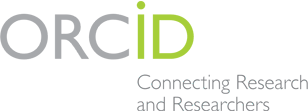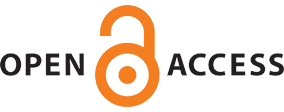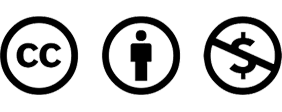Original Article
Abstract
References
Information
Purpose: Chemical substances are used in a variety of ways throughout industry. These chemical substances are transported for uses, and accidents related to their transport continue to occur more than 10 times a year. Recently, an accident occurred during the transport of hydrochloric acid at Jukrim JC. Therefore, it is necessary to predict the damage area and establish prevention and protection alternatives. Method: Damage ranges analysis is affected by weather conditions and leakage amount. Weather conditions are based on monthly weather conditions as of 2023 and weather conditions on the day of the accident. Additionally, the leakage amount was applied to the capacity of the hydrochloric acid container in the event of an actual accident. These were combined to develop a total of 96 accident scenarios. The developed scenario analyzed the damage range by PAC level using ALOHA Dispersion Models. Result: In the event of an accident, At the time of the accident, PAC-1, PAC-2, and PAC-3 were 317 m, 86 m, and 35 m, respectively, based on the accident point. A monthly analysis showed that damage was greatest in July under the lowest temperature conditions, and greatest in August under the highest temperature conditions. In addition, the overall expected damage range was shown to depend on the amount of leakage and temperature. However, in January and December, the temperature is low, so evaporation of substances does not occur properly. There was no significant difference in the damage area regardless of the amount of leakage. Conclusion: In the event of an accident, the maximum damage area would be 4.2 km. At the time of the accident, sensory irritation occurred in nearby villages. However, if an accident occurs in the city center, large-scale damage is expected. It is necessary to prevent accidents in advance and take immediate action in case of a leak.
연구목적: 산업 전반에 활용되는 화학물질은 다양한 용도로 활용된다. 이러한 화학물질은 사용을 위해 이송되며, 이송에 따른 사고도 매년 10회 이상 지속적으로 발생되고 있다. 이와 관련하여 최근 죽림JC에서 염산의 이송 중 사고가 발생하였다. 따라서, 사고물질에 따른 피해 범위 예측을 통한 방지대책 수립이 필요하다. 연구방법: 피해 범위 분석은 기상 조건과 누출량에 의한 영향을 받는다. 기상 조건은 2023년을 기준으로 월별 기상 조건과 사고일의 기상 조건을 적용하였다. 또한, 누출량은 실제 사고시의 염산 용기의 용량을 적용하였다. 이를 조합하여 총 96개의 시나리오를 작성하였다. 작성된 시나리오는 ALOHA Dispersion Models을 통해 PAC 레벨에 의한 피해 범위를 분석하였다. 연구결과: 사고 당시 사고지점을 기준으로 PAC-1, 2, 3은 각각 317m, 86m, 35m로 나타났다. 2023년 월별로 분석하는 경우 최저 온도 조건에서는 7월, 최고온도 조건에서는 8월에 가장 피해 범위가 넓게 발생되는 것으로 분석되었다. 또한 전반적으로 피해 예상범위는 누출량과 온도에 영향을 받는 것이 확인되었다. 다만, 1월과 12월은 온도가 너무 낮아 물질의 증발이 제대로 이루어지지 않아 피해 범위에 큰 차이를 보이지 않는 것으로 나타났다. 결론: 사고가 발생하는 경우 넓게는 4.2km까지도 피해가 발생되는 것으로 나타났다. 사고 당시 인근마을에서는 자극을 느끼는 정도의 피해가 발생하였다. 그러나, 만약 도심지 내에서 사고가 발생하는 경우 대규모의 피해가 예상되므로 사고를 사전에 예방하고 누출 시 즉각적인 조치가 필요하다.
- Choi, Y.-H. (2021). "Management of hazard material transport on expressway." Transportation Technology and Policy, Vol. 18 No. 1, pp. 105-114.
- Crowl, D.A., Louvar, J.F. (1990). Chemical Process Safety, 3rd Edition, PRT Prentice Hall, Boston, MA, pp. 13-223.
- Doopedia (2024). Doopedia homepage. Retrieved from
https://www.doopedia.co.kr . - Ebricmall (2024). Ebricmall homepage. Retrieved from
https://www.ebricmall.com . - EPA (United States Environmental Protection Agency) (2000). Hazard Summary Retrieved from
https://www.epa.gov . - EPA (United States Environmental Protection Agency), NOAA (National Oceanic and Atmospheric Administration) (2007). Aloha User'S Manual. Washington. D.C., p. 110.
- FEMA (Federal Emergency Management Agency), DOT (United States Department of Transportation), EPA (United States Environmental Protection Agency) (1990). Handbook of Chemical Hazard Analysis Procedures, Washington. D.C., pp. 3-22-3-24.
- Hong, J.-Y., Choi, Y.-H., Park, D.-J. (2018). "Study on risk factors through crash data analysis of hazardous materials transporting vehicles on expressway." Korean Journal of Hazardous Materials, Vol. 6, No. 1, pp. 91-98.10.31333/kihm.2018.6.1.91
- Hwang, M.-W., Cheon, Y.-W., Lee, I.-M., Moon, J.-Y. (2016). "Study on the analysis of damage area by hydrochloric acid leakage in a printed circuit board manufacturing plant." The Korean Society of Industrial and Engineering Spring Research Paper Abstract, p. 369.
- ILO (International Labour Organization) (2024). ICSC card Retrieved from
https://chemicalsafety.ilo.org . - Kim, S.-B., Lee, H.-S., Jeong, S.-K. (2021). "A study on the effectiveness of the hazardous chemical transport vehicle management system." Journal of the Society of Disaster Information, Vol. 17 No. 4, pp. 794-801.
- Kim, S.-B., Lee, S.-J., Jeong S.-K., Lim, M.-H., Song, Y.-I., Ahn, E.-S., Jeong, H.-Y., Kim, N.-J., Lee, H,-J., Choi, S.-W. (2017). "A study on investigation procedure of chemical spill by vehicle transporting chemicals." Journal of Korea Society of Disaster Information, Vol. 13 No. 1, pp. 1-5.10.15683/kosdi.2017.03.31.1
- Ko, J.-S. (2013). "Study on the consequence effect analysis & process hazard review at gas release from hydrogen fluoride storage tank." Journal of The Korean Society of Disaster Information, Vol. 9 No. 4, pp. 449-461.
- Korea Meteorological Administration (2024). Weather information. Retrieved from
https://data.kma.go.kr . - Lee, Y.-H. (2020). "A study on the damage range according to leakage scenarios in natural gas pipeline of LNG fueled ship." Journal of the Korean Society of Marine Environment & Safety, Vol. 26, No. 4, pp. 317-326.10.7837/kosomes.2020.26.4.317
- Mannan, S., Lees, F.P. (2005). Lees' Loss Prevention in the Process Industries, 3rd Edition, Elsevier, Burlington, MA, pp. 15/57-15/100.
- Moon, B.-C. (2024). "Research on rapid disaster prevention measures due to leakage during transport of hydrochloric acid tank lorry." Journal of the Society of Disaster Information, Vol. 20, No. 1, pp. 213-221.
- NICS (National Institute of Chemical Safety). (2024). Chemical material Comprehensive Information System Retrieved from
https://nics.me.go.kr/ . - NOAA (National Oceanic and Atmospheric Administration), CAMEO Chemicals (2024) Retrieved from
https://cameochemicals.noaa.gov/ . - Park, K.-S. (2016). "Offsite risk assessment on chloric acid release." Korean Chemical Engineering Research, Vol. 54, No. 6, pp. 781-785.10.9713/kcer.2016.54.6.781
- Park, S.-W., Hong, S.-C. (2018). "A study on leakage accident of hydrochloric acid tank lorry on the road." Journal of the Korean Society of Hazard Mitigation, Vol. 18, No. 1, pp.157-163.10.9798/KOSHAM.2018.18.1.157
- Yoo, B.-T. (2021). "A study on improvement safety management through chemical accident investigations" Journal of the Society of Disaster Information, Vol. 17, No. 3, pp. 403-414.
- Yoo, B.-T., Moon, M.-H. (2018). "Development of emergency response plan for chemical accident using ALOHA program: Focusing on evacuation plan." Journal of the Korean Society of Hazard Mitigation, Vol. 18, No. 3, pp. 311-319.10.9798/KOSHAM.2018.18.3.311
- Publisher :The Korean Society of Disaster Information
- Publisher(Ko) :한국재난정보학회
- Journal Title :Journal of the Society of Disaster Information
- Journal Title(Ko) :한국재난정보학회논문집
- Volume : 20
- No :4
- Pages :815-827
- DOI :https://doi.org/10.15683/kosdi.2024.12.31.815
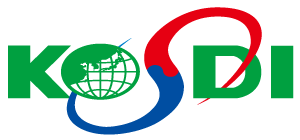



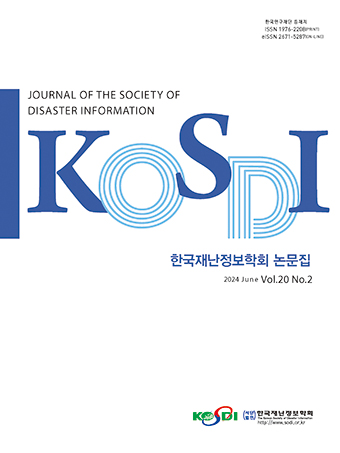 Journal of the Society of Disaster Information
Journal of the Society of Disaster Information
